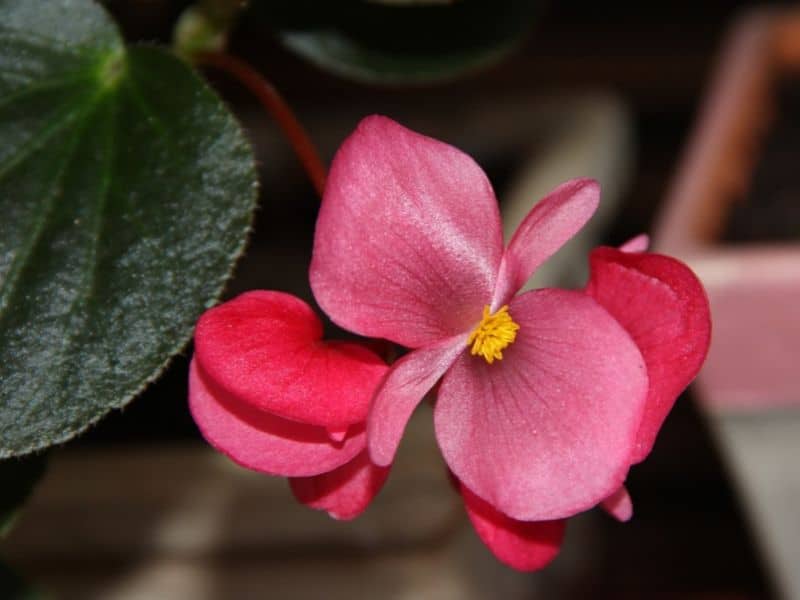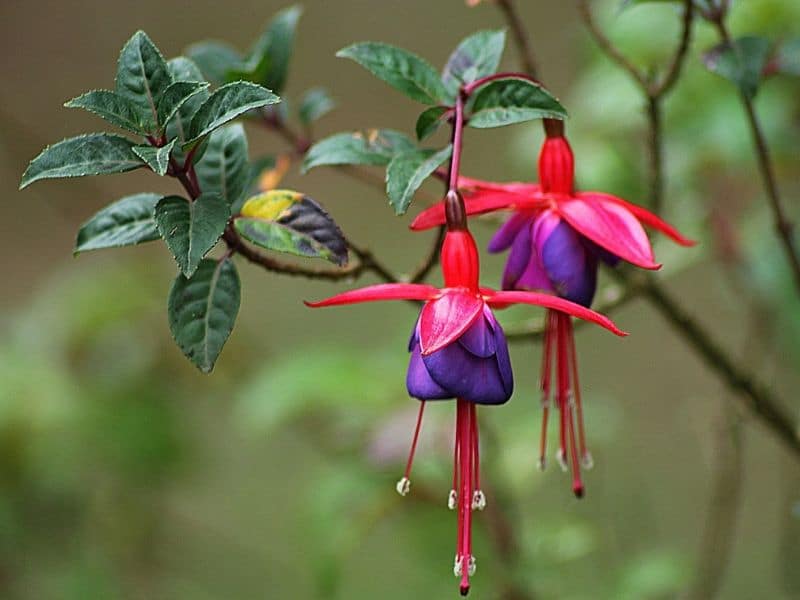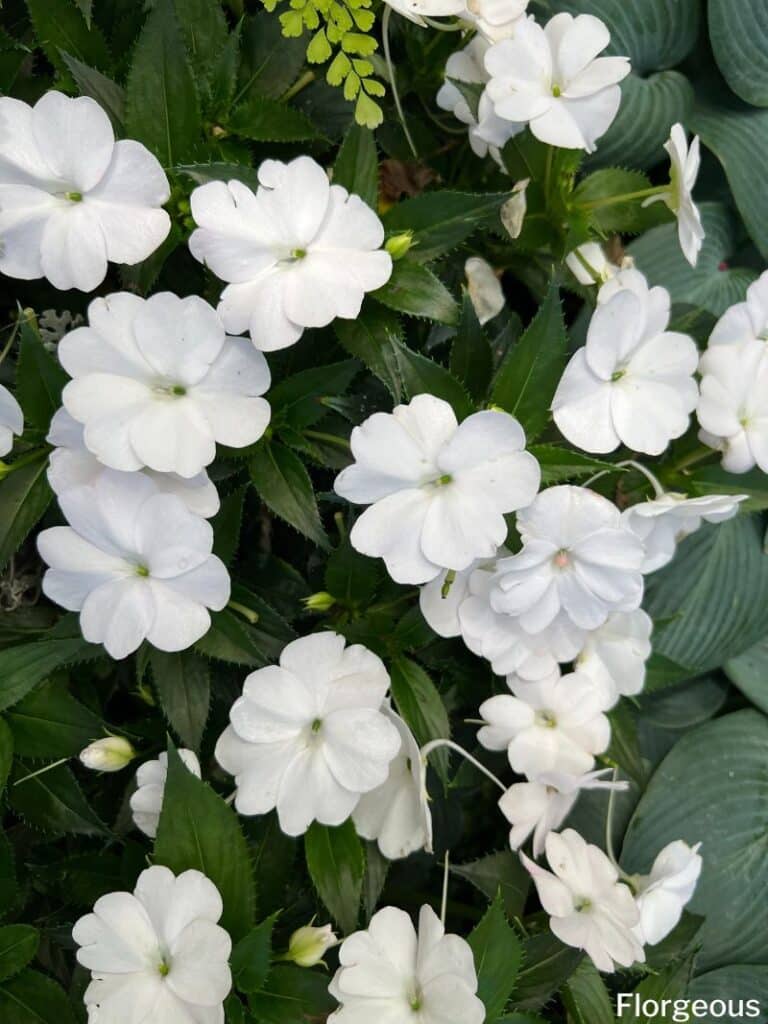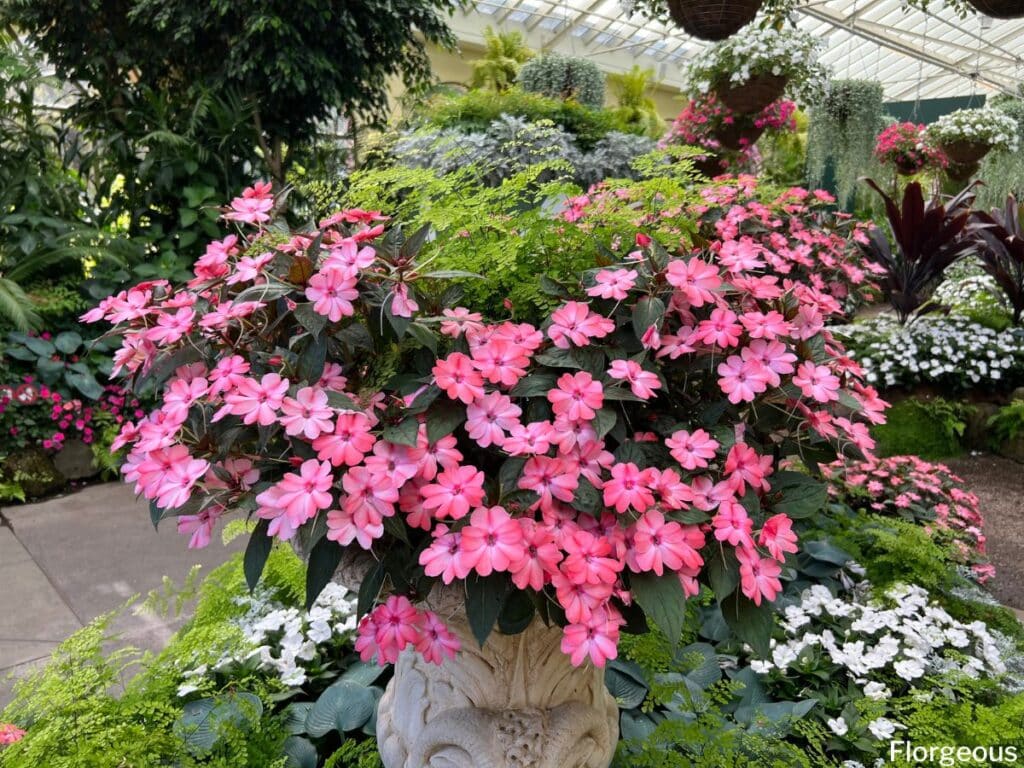Impatiens (Impatiens walleriana), also called the Bizzy Lizzy, is one of the most popular annuals in the US and is very common in many other countries. There are over 1,000 species of these flowering plants and they can range from just 5 centimeters tall up to 2.5 meters in height.
Impatiens are popular flower species because they produce vivid blooms in colors that include various shades of pink, red, magenta, orange, and mixed hues when they bloom during summer.
You can mix all sorts of colors of these attractive flowers to create a striking garden bed but most gardeners prefer to grow other plant species with impatiens to enhance the look of these flowers or to create more contrast and texture.
In this guide, we are going to explore some of the best companion plants to add to your garden bed when you grow impatiens.
What to Plant with Impatiens

If you want to create a vivid growing garden then it is always best to pair plant varieties with similar growing requirements in the same garden bed.
Impatiens are popular shade garden plants because they grow well in semi-shade and they require lots of water. Throughout the warmer seasons, they will need to be kept moist or they will quickly wilt and die.
Despite their water-reliant nature, these plants do need to be established in well-drained soil or they can develop root rot. While they need regular watering, they also won’t tolerate waterlogged or soggy conditions.
Now that we know what conditions impatiens require to flourish, it is time to look for some impatiens planter ideas that can grow well in these same conditions.
Sweet Potato Vines
If you are growing impatiens in hanging baskets then the sweet potato vine (Ipomoea batatas) is one of the very best impatiens companion plants you can possibly consider. These vine plants produce striking yellow-tinted leaves that will trail over the edge of the hanging baskets to create a dramatic waterfall effect underneath the vivid flowers.
Sweet potato vine plants will grow well in rich soil that drains well. They grow their absolute best in hot and humid conditions. These vine plants prefer sunlight but they will also grow well in dappled shade or on a south-facing patio that receives lots of indirect light.
This type of plant combination will grow very well in containers but you can also grow both sweet potato vines and impatiens in a garden bed.
Coral Bells

Coral bells (Heuchera) are excellent shade garden plants and perfect companion plants because they will add lots of texture and color to your garden bed.
The bushy shrub does produce flowers on tall spikes but they are mostly grown for their colorful foliage. Coral bell varieties come in various colors like green, chartreuse, yellow, peach, pinkish-red, copper, purple, and many other shades.
Since these vivid bushes are perennials, they will also keep your garden nice and full when the impatiens start to die back during winter.
Coral bells will flourish next to your impatiens because they are shade-loving plants that thrive in moist well-drained soil. As with impatiens, you need to keep the soil moist or the shrubs will quickly wilt.
Coral bells have a growing height as impatiens plants and can be grown alongside one another in the same containers or garden bed.
If you want to know what to plant with coral bells in a garden, pay attention to coral bells’ foliage and height. Planting taller plants in the background provides a backdrop for the coral bells while adding lower-growing groundcovers to help retain moisture and suppress weeds.
Begonias

Begonias (Begonia) are perfect perennials for shady areas and their colorful blooms will complement your impatiens very well.
These ornamental plants grow well in dappled shade or indirect light and they need to be established in moist but properly draining soil.
There are thousands of different species of begonias. The best way to combine these lovely companion plants with impatiens is by growing shorter varieties of begonia in front of taller varieties of impatiens so those striking blooms can stay nice and visible.
Fuchsia

Fuchsia (Fuchsia) are also great flowers or small trees to add to your impatiens garden. These bushy plants produce vivid pink and purple flowers that will lure plenty of charming hummingbirds to your garden.
Fuchsia flowers grow well in full sun or partial shade and should be sheltered during the warmest part of the day. They need fertile but moist soil that drains well.
It is best to pair this flowering shrub with a variety like new guinea impatiens because this variety handles periods of sun very well.
Some varieties of this flowering plant will grow up to six feet tall and should be grown behind your impatiens. Shorter varieties can be successfully established in the same garden bed as new guinea impatiens.
You need to pay attention to fuchsia varieties and their heights when selecting compatible companion plants for fuchsia.
Ferns
Ferns (Tracheophyta) are excellent plants to add to any shady areas in your garden and can be wonderful companion plants for impatiens because their tall leaves will add lots of texture to your garden.
Most fern varieties require dappled shade or areas that receive lots of afternoon shade and they need to be established in fertile soil that is kept moist but drains well.
It is best to establish these larger plants in the background with a bank of beautiful flower plants in the front.
What NOT to Plant with Impatiens

Impatiens will grow well next to any shade-loving plant but most drought-tolerant varieties that require lots of direct sun won’t grow well in impatiens flower beds.
It is best to avoid sun-loving plants like black-eyed susans, coneflowers, or lavender next to impatiens because their growth will be stunted in these shade areas since they need a lot more sun.
You should also avoid plants that are prone to downy mildew or root rot because species like peonies, catmint, and poppies tend to develop problems if they are established in a shady spot that receives lots of water.
Final Thoughts
Impatiens is a great plant for companion planting because it can be paired with a huge variety of ornamental plants like sweet potatoes, begonias, coral bell plants, ferns, fuchsia, and many others.
We hope that our impatiens garden design guide made it a little bit easier to find companions that will enhance these colorful flowers. And if you are also adding other plant varieties to your garden then you should have a look at some of our other guides where we discuss other great plant species to pair in garden beds.
See more:







